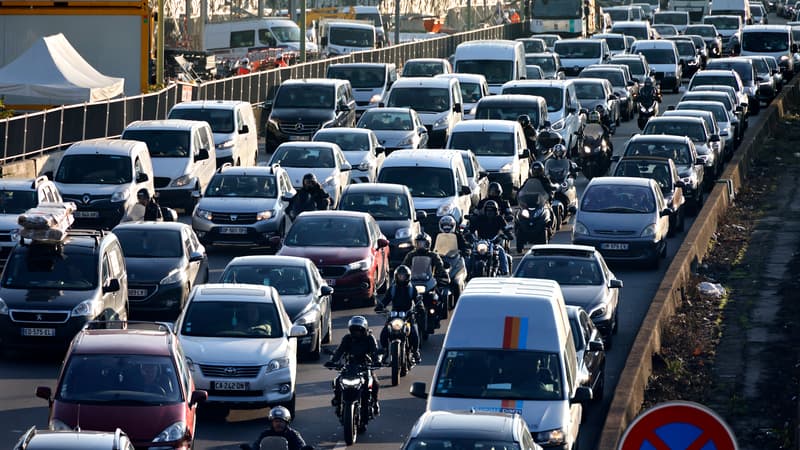Two or three wheels driving between rows of cars: most motorists are used to this practice. But what we call traffic between lanes is not actually authorized by the highway code.
A practice awaiting a legal framework
A tolerance that has taken the form of an experiment since August 2, 2021, recalls a Road Safety press release, citing its main objective: “to allow us to study the conditions under which this practice could be authorized, insured and taught”. In short: to integrate this practice into the highway code to give it a real legal framework.
A first experiment, carried out between 2016 and 2021, However, he did not allow a decision to be made. to authorize or permanently prohibit this practice that has become part of the customs of drivers, especially in large cities.
Authorized again on the 185 km of Olympic routes
At the beginning of July, a decree extended this second experiment until September 15 in the 21 departments where it was implemented. But it had been suspended for the Paris region and the 185-kilometer Olympic course, officially from July 15 to September 15. In reality, during this period, traffic between lanes tended to change lanes.
In fact, motorcycles and scooters were not allowed to circulate on a traffic lane. passing between an Olympic route and a classic route, under penalty of a fine and deduction of points. We were therefore able to witness “queue jumping” on the other lanes, which was not without danger.
Therefore, the decree published in the Official Gazette on Wednesday, September 11, extends the experiment until December 31 in the following 21 departments:
- the departments of the Île-de-France region, namely Paris, Hauts-de-Seine, Seine-Saint-Denis, Val-de-Marne, Seine-et-Marne, Yvelines, Essonne and Val-d’Oise
- the Rhône and the metropolis of Lyon
- The departments of the Mediterranean arc: Alpes-Maritimes, Var, Bouches-du-Rhône, Drôme, Vaucluse, Hérault, Pyrénées-Orientales
- Haute Garonne
- the gironde
- Isere
- Loire Atlantique
- the north
But will it soon be banned on the ring road?
Road Safety also reminds that, in the affected departments, this practice “is authorized on motorways and roads with two lanes separated by a median and with at least two lanes each, where the maximum authorized speed is greater than or equal to 70 km/h.”
The Paris ring road’s 50 km/h speed limit announced by Anne Hidalgo for 1 October should therefore theoretically lead to a ban on traffic between lanes.
Other rules to be respected, always according to road safety and in the 21 affected departments:
- Traffic between rows of stopped vehicles or vehicles travelling at very low speed is carried out on the two lanes, in the same direction of traffic, the ones on the left side of a road.
- The lateral space between vehicles traveling on the two leftmost lanes of a roadway must be sufficient
- Traffic between lanes is limited to a maximum speed of 50 km/h, with a speed differential of 30 km/h compared to other vehicles.
- None of the highway’s travel lanes are under construction or covered in snow or ice.
- Before circulating in inter-rows, the driver warns other users of his intention
- Two- or three-wheeled motor vehicles must not force their way through.
- It is prohibited for a vehicle in between rows to overtake another vehicle in between rows.
- When traffic becomes more fluid and vehicles are travelling at more than 50 km/h in at least one of the two lanes, two- or three-wheeled motor vehicles must return to their place in the lanes.
Source: BFM TV


